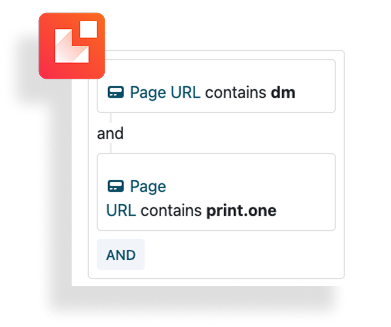How to measure Direct Mail: 7 ways to gain clear insight
In today’s digital era, marketers love data. We all want to know exactly which channel generated a purchase, a new subscriber, or a promising lead. Many people assume this isn’t possible with physical post (Direct Mail). But that couldn’t be further from the truth. In this article, you’ll discover several ways to gain clear insight into the performance of your Direct Mail campaign.

Dennis Koster
Marketer
Read on

What can we actually measure?
Before we dive in, let’s first look at what you can measure within a Direct Mail campaign. These are some common metrics:
Metric | Explanation |
Response rate | The percentage of recipients who respond in any way. This could include visiting your website, placing an order, completing a form, or calling the unique phone number. |
Scan rate (QR code) | The number of times the QR code on your card is scanned, divided by the number of mail pieces sent. This gives a direct indication of engagement — and with server-side tracking, it’s airtight. |
Website visits | All sessions that arrive on your website via Direct Mail. These can be identified using UTM parameters, a unique landing page, or a QR tracking link. |
Conversions | The actions you want people to take after receiving your DM — for example: a purchase, sign-up, download, or demo request. This ties Direct Mail directly to measurable results. |
Revenue per card/campaign | The total revenue generated by the DM campaign, divided by the number of mail pieces sent. Ideal for determining the financial impact of each card. |
Average order value | The average amount customers spend after receiving your Direct Mail piece. |
ROI | The ratio between the revenue and the total costs of your DM campaign. This shows whether Direct Mail is profitable. Try our handy ROI calculator! |
Now, let’s move on to the 7 ways to measure your Direct Mail results.
1. Tracking QR code for Direct Mail
A highly effective way to measure how much traffic your Direct Mail generates is by adding a QR code. When creating a card in our software, you can easily add a tracking QR code.
For the experts: scans are tracked server-side, giving you accurate, reliable insight into the amount of website traffic generated by your card.
2. Tracking links on your card
Add UTM parameters to the URL printed on your card. For example, use Print.one as the source and DM as the medium. A URL might look like this:
www.[yourwebsite].nl?utm_campaign=winback-campaign&utm_source=print.one&utm_medium=dm
Make sure to shorten the link so recipients don’t have to type a long URL. Nobody likes doing that.
3. Create a unique landing page for your DM campaign
Communicate the URL of this landing page exclusively via Direct Mail. Ensure the page is not indexed by search engines, and don’t share the link through other channels.
This way, any traffic that arrives must have come from your Direct Mail campaign.
4. Use trackable discount codes
Want to pinpoint exactly whether a sale came from Direct Mail? Create a unique discount code for your campaign.
Already using unique codes? Add a recognisable prefix, for example:
[prefix to identify dm source] [unique code]
DM12345FF
Good to know: you can export discount codes from platforms like Shopify or Adobe Commerce (Magento) and upload them to Print.one, so each code is printed on the correct card.
5. Cross-checking mailing lists and customer lists
Another way to determine the attribution of your physical mail campaign is by comparing the recipients on your mailing list with the individuals who converted. In other words: which people or companies that received a card went on to place an order?
6. Unique phone number
If your audience prefers picking up the phone rather than responding online, a unique phone number used exclusively on your Direct Mail piece is a great way to measure your response rate.
7. Use Leadinfo for DM traffic identification
If you follow an Account-Based Marketing strategy, Leadinfo is likely already in your stack. If not: Leadinfo identifies the companies visiting your website.
My tip: combine a tracking link (point 2 above) with Leadinfo and create a segment that highlights the traffic coming from your Direct Mail campaign.
Choose criteria such as “Page URL contains dm” or “print.one”. You’ll then see a neat overview of all recognised companies that landed on your site via your Direct Mail.

Finally: the financials
If your campaign is commercial in nature, you’ll naturally want to know whether it generated revenue. Once you know which traffic came in through your DM campaign, you can look at the resulting turnover. Use our ROI calculator to easily calculate your campaign’s return on investment.

